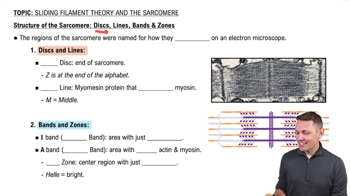Mark the following statements as true or false. If a statement is false, correct it to make a true statement.
b. A vertebral disc is composed of an inner anulus fibrosus and an outer nucleus pulposus.
 Verified step by step guidance
Verified step by step guidance Verified video answer for a similar problem:
Verified video answer for a similar problem:


 6:29m
6:29mMaster Spine (Vertebral Column) with a bite sized video explanation from Bruce Bryan
Start learning